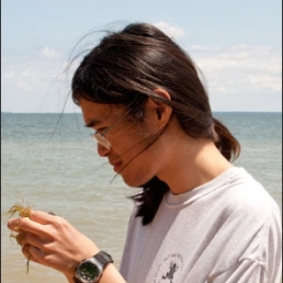Eight students will be presenting the summer work at the Ocean Sciences Meeting in March 2022!
Gabriel Ng, Cornell University
Class Year:
2012Mentor:
Nick Nidzieko, Ph.D.Project Title:
The Effects of Differential Water Mixing on the Zooplankton Community
Abstract:
River ecosystems are influenced not only through environmental parameters but also through the mixing of different water currents. Mixing of water can alter zooplankton population dynamics through the change in environmental parameters; alternatively, movement of water can alter zooplankton populations through the removal or addition of new individuals. In addition to measuring the impact mixing has on zooplankton population, the study is also examining how different tributaries might have different mixing coefficients. Within the Little Choptank River, there are numerous tributaries that run in several axes. One hypothesis is that tributaries that run north to south will mix differently than tributaries that run from east to west. The different hypotheses were tested using thermistors and weather stations to calculate the heat budget; a zooplankton net was used to survey the zooplankton community. Results showed that while mixing did occur, they did not differ at various tributaries; furthermore, mixing is positively correlated with zooplankton, but zooplankton did not correlate with any other environmental parameters except for suspended solids. This would indicate that mixing is moving zooplankton instead of altering their environment.
Location:
Horn Point LaboratoryPresentations:
Ng, G.*, and N. J. Nidzieko. 2013. The effects of differential water mixing on the zooplankton community . ASLO Aquatic Sciences Meeting, New Orleans, Louisiana .



